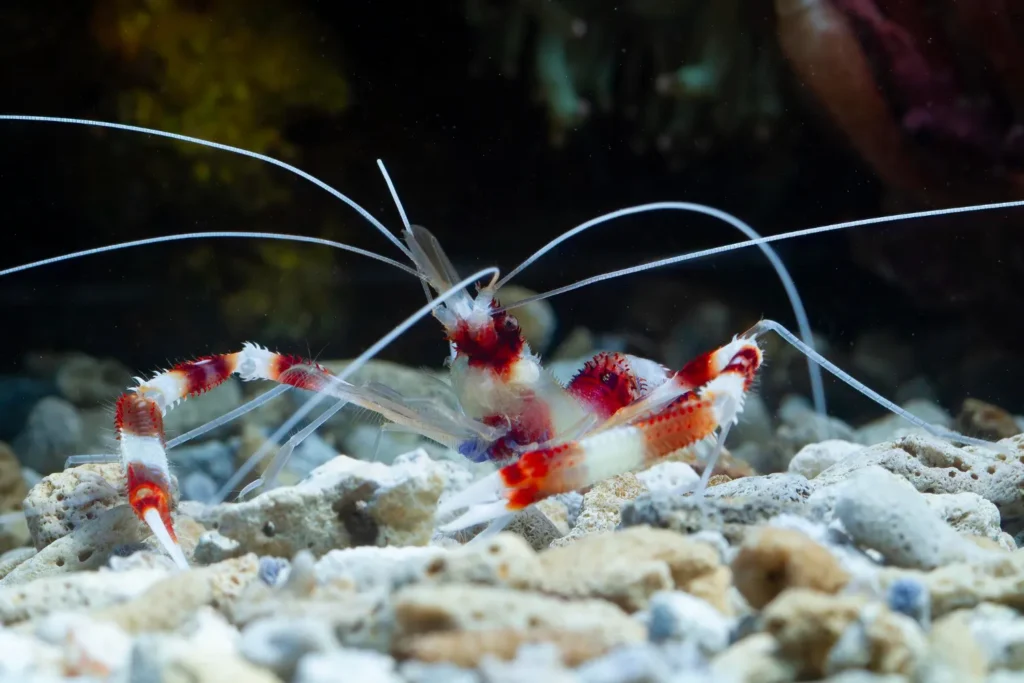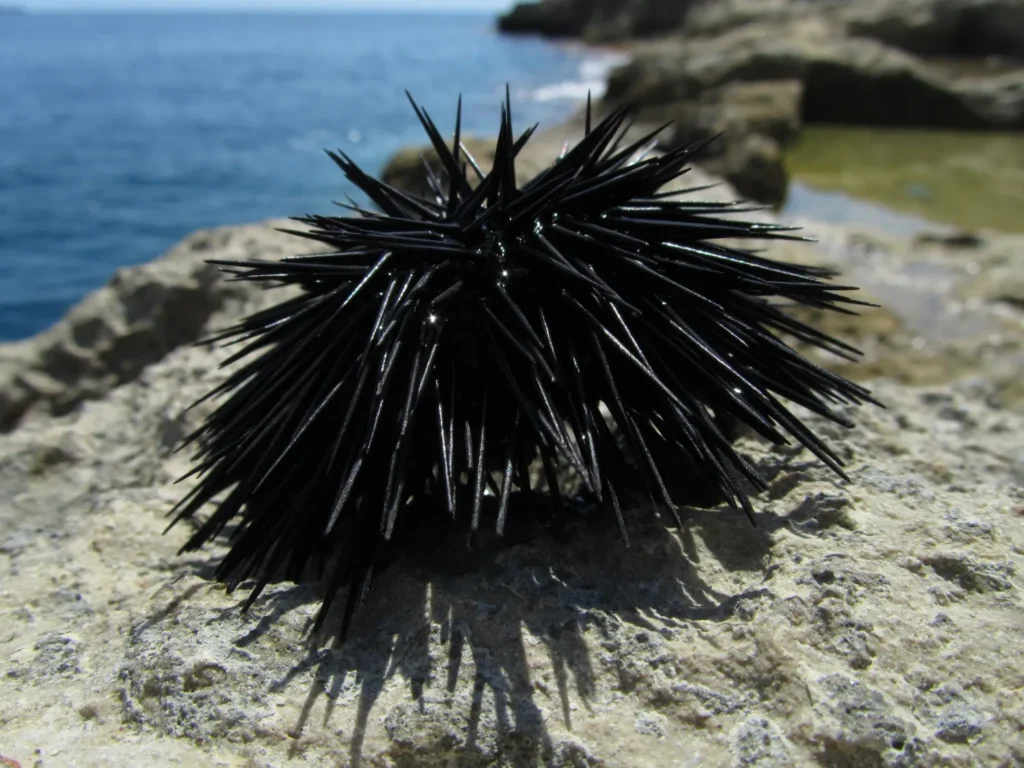Introduction
Coral reefs, often referred to as the “rainforests of the sea,” are among the most diverse and productive ecosystems on Earth. While much attention is given to the corals themselves, the myriad of small marine species—the tiny protectors of the coral reefs—play pivotal roles in maintaining the health and resilience of these underwater communities. In this article, we’ll explore how these diminutive creatures contribute significantly to ocean health, ensuring the survival and prosperity of coral reefs.
Related: What Are Coral Reefs? 5 Wondrous Facts About These Vital Underwater Cities
Why Coral Reefs Need Protection
Coral reefs occupy less than 1% of the ocean floor yet are home to more than 25% of all marine life, rivaling the biodiversity of tropical rainforests. This rich biodiversity is not just a marvel of nature but also a cornerstone for the livelihoods of millions of people worldwide, providing food, tourism opportunities, and coastal protection.
However, these vital ecosystems face numerous threats:
- Climate Change: Rising sea temperatures lead to coral bleaching, a stress response where corals expel the symbiotic algae living in their tissues, causing them to turn white and often resulting in coral death.
- Pollution: Runoff containing sediments, nutrients, and pollutants can smother corals and interfere with their ability to feed, grow, and reproduce.
- Overfishing: Removing key species disrupts the delicate balance of reef ecosystems, leading to overgrowth of algae and decline of coral health.
Protecting coral reefs is not just about preserving their beauty but ensuring the survival of the countless species that depend on them, including humans.
Related: Shocking 2024: Coral Reefs on Death Row: The Coastal Devastation to Come
Meet the Tiny Protectors
Beyond the vibrant corals and colorful fish lies an army of small but mighty creatures that serve as the reef’s guardians. Let’s delve into the roles of these tiny protectors of the coral reefs.
Cleaner Shrimp
Cleaner shrimp, such as those from the genus Lysmata, establish cleaning stations where they remove parasites and dead tissue from fish. This symbiotic relationship benefits both parties: fish receive grooming, reducing their parasite load, while shrimp gain a food source.

Goby Fish
Goby fish are known to guard corals against algae overgrowth and predators. They maintain the health of their coral hosts by preventing harmful algal encroachment.

Pistol Shrimp & Algae-Eating Crabs
Pistol shrimp create burrows that provide shelter for themselves and their goby partners, offering protection from predators. Algae-eating crabs help control algal populations, preventing them from overwhelming coral structures.

Snails & Sea Urchins
Herbivorous snails and sea urchins graze on algae, maintaining a balance that favors coral growth. Their feeding habits prevent algal dominance, which can smother corals and impede their access to sunlight.

Related: Marine Food Web: 5 Threats to the Backbone of the Oceans
Symbiosis in Action
The interactions between these tiny protectors and corals exemplify symbiosis, where different species live in close association for mutual benefit. For instance, the relationship between goby fish and corals is a classic example of mutualism: the gobies receive shelter and protection within the coral structures, while the corals benefit from the gobies’ diligent removal of encroaching algae and detritus. This cleaning action is vital for the corals’ health, as excessive algal growth can lead to coral stress and mortality.
Scientific studies have highlighted the importance of these relationships. For example, research has shown that corals inhabited by certain fish species are more likely to withstand and recover from heat stress, suggesting that these fish provide crucial support to their coral hosts.
Related: Examples of Coral Bleaching in 2024: A Global Crisis
- Tiny protectors of the coral reefs help maintain ecological balance by cleaning, guarding, and supporting coral life.
- Coral reef protectors like gobies, shrimp, and crabs prevent algae overgrowth and disease.
- Tiny protectors contribute to the survival of over 25% of marine biodiversity.
- Coral reefs act as natural barriers, protecting coastlines from erosion and storms.
- Healthy reefs support fisheries and food security for millions globally.
- Coral reefs generate billions annually through tourism, medicine, and marine trade.
Related: Coral Reef Food Webs: A Fascinating Guide to the Ocean’s Ecosystem
What Happens When Tiny Protectors Disappear?
The loss of these small species can have cascading effects on reef ecosystems. Without cleaner shrimp, fish may suffer from increased parasite loads, leading to decreased health and population declines. A reduction in herbivorous species like snails and sea urchins can result in unchecked algal growth, smothering corals and hindering their ability to photosynthesize and grow.
Related: 4 Critical Impacts of Phytoplankton on Global Climate: Unraveling the Ocean’s Microscopic Guardians
Key Takeaway
- Tiny protectors of the coral reefs are disappearing due to habitat destruction and water pollution.
- Coral reef protectors are affected by rising sea temperatures causing widespread coral bleaching.
- Tiny protectors struggle to survive in polluted waters with excess nutrients and chemical runoff.
- Overfishing removes critical species that regulate reef ecosystems and support coral health.
- Ocean acidification weakens coral skeletons and disrupts symbiotic relationships.
- Coastal development leads to sedimentation that smothers coral and harms reef dwellers.
- Invasive species outcompete or prey on native reef organisms, including tiny protectors.
- Unsustainable tourism and physical damage from anchors or divers degrade reef structures.
Related: Ocean Acidification: Unveiling the Hidden Crisis Threatening Marine Life
How You Can Help Protect Coral Reefs
Protecting the tiny protectors of the coral reefs is integral to the overall conservation of these ecosystems. Here are some actions you can take:
- Support Sustainable Seafood Choices: Opt for seafood that is harvested in environmentally friendly ways to reduce overfishing pressures on reef ecosystems.
- Reduce Pollution: Minimize the use of fertilizers and pesticides that can run off into waterways and harm marine life.
- Participate in Reef-Friendly Tourism: Choose tour operators that follow environmentally responsible practices and contribute to reef conservation efforts.
- Support Marine Protected Areas (MPAs): Advocate for and support the establishment of MPAs, which provide safe havens for marine life and help replenish fish stocks.
- Reduce Carbon Footprint: Lowering greenhouse gas emissions can mitigate climate change impacts, such as ocean warming and acidification, which threaten coral reefs.
Related: Reduce Your Carbon Footprint Now! 10 Shockingly Simple Ways to Save the Planet
Conclusion: Small Creatures, Big Impact
The tiny protectors of the coral reefs may be small in size, but their contributions to ocean health are immense. By maintaining the delicate balance of reef ecosystems, these small species ensure the survival and prosperity of countless marine organisms. Protecting and preserving these tiny guardians is not just about saving individual species but about safeguarding the intricate web of life that depends on healthy coral reefs. Our collective actions can make a significant difference in ensuring that these vital ecosystems continue to thrive for generations to come.
Key Takeaway: The health of coral reefs is intricately linked to the presence and activities of small marine species.
FAQs
1. What are the tiny protectors of the coral reefs?
Tiny protectors of the coral reefs are small marine species like shrimp, gobies, and crabs that safeguard coral health and maintain ecosystem balance.
2. Why are coral reef protectors important for marine biodiversity?
Coral reef protectors help control algae, clean fish, and support coral growth, making them essential for sustaining marine biodiversity and reef resilience worldwide.
3. How do tiny protectors benefit coral reef ecosystems?
Tiny protectors reduce algae overgrowth, fight off parasites, and form symbiotic partnerships that strengthen coral reefs and keep ocean ecosystems functioning properly.
4. What threats do tiny protectors of the coral reefs face?
Pollution, climate change, overfishing, and habitat destruction threaten the survival of tiny protectors, weakening coral reef ecosystems and disrupting ecological harmony.
5. How can we help protect coral reef protectors and reefs?
We can help by reducing plastic use, supporting marine conservation, choosing sustainable seafood, and raising awareness about the role of coral reef protectors.





